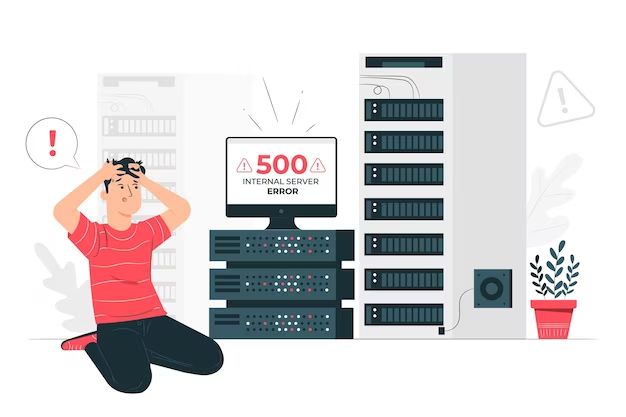Why Servers Fail: Causes, Real-World Outages, and How to Prevent Downtime
 Ahmed Raza
Ahmed Raza
Server failures are a critical issue in today's digitally interconnected world. From global enterprises to small businesses, server downtime can disrupt operations, lead to significant financial losses, and damage reputations. This article examines notable server outages, explores the underlying causes, evaluates their impact, and provides practical recommendations to minimize downtime.
Major Server Failures and Their Impacts
1. Atlassian Jira Outage
In 2024, Atlassian experienced widespread performance degradation in its Jira product family. A scheduled database upgrade inadvertently caused cascading system timeouts, disrupting project management tools essential to businesses worldwide. The incident underscored the risks of inadequate pre-deployment testing and highlighted the need for robust contingency plans.
2. Microsoft Azure Authentication Failure
Microsoft Azure encountered multiple service outages in January 2024, notably affecting the Azure Resource Manager (ARM). An untested preview feature introduced a latent code defect that led to prolonged authentication failures. Critical Azure services, including virtual machines and data pipelines, were impacted, affecting organizations dependent on Microsoft's cloud infrastructure for daily operations.
3. AT&T Network Collapse
A nationwide AT&T outage in February 2024 disrupted internet services for millions of customers, including businesses reliant on consistent network performance. The FCC's investigation attributed the failure to an incorrect process during network expansion, compounded by inadequate peer reviews and testing. This incident serves as a cautionary tale about the importance of rigorous network governance.
4. Google Cloud Metadata Store Failure
A regional metadata store issue disrupted Google Cloud’s us-west1 zone, affecting services such as Vertex AI and Identity and Access Management (IAM). The outage persisted for nearly three hours, demonstrating how localized infrastructure failures can escalate into global disruptions for users across sectors.
Key Causes of Server Downtime
1. Hardware Failures
Hardware remains a common point of failure due to component degradation or environmental factors. Overheating, power supply issues, and disk malfunctions can cripple server operations.
2. Software Glitches
Unstable software updates, untested features (as seen with Azure), or application misconfigurations can introduce vulnerabilities that lead to crashes.
3. Network Infrastructure Challenges
Bandwidth limitations, misconfigured DNS, and large-scale attacks such as DDoS events can cause servers to become unreachable, even if the hardware is operational.
4. Human Errors
Manual misconfigurations, accidental deletions, or flawed update processes can have catastrophic effects, as evidenced by AT&T’s outage.
5. Security Breaches
Cyberattacks, including ransomware and denial-of-service attacks, can compromise server functionality and lead to prolonged outages.
Mitigating Server Downtime: Recommendations
1. Implement Redundancy and Failover Systems
Use redundant hardware and geographically diverse backup systems.
Employ failover protocols to redirect traffic during disruptions, reducing impact.
2. Strengthen Software and Network Management
Rigorously test updates in staging environments before deployment.
Deploy advanced monitoring tools to detect and address anomalies in real time.
3. Minimize Human-Error Risks
Automate routine processes such as software updates and backups.
Train IT personnel in best practices and disaster recovery protocols.
4. Enhance Cybersecurity Measures
Regularly conduct penetration testing to identify and patch vulnerabilities.
Deploy intrusion detection systems (IDS) and use multi-factor authentication to secure access.
5. Invest in Disaster Recovery Planning
Establish clear protocols for restoring operations in the event of a failure.
Use cloud-based recovery solutions for rapid restoration of critical data.
Conclusion
Server failures, whether caused by hardware malfunctions, software bugs, or human errors, pose a significant risk to operational continuity and business success. High-profile incidents like those affecting Atlassian, Microsoft, AT&T, and Google Cloud illustrate the financial and reputational stakes involved. By adopting proactive strategies—such as robust testing, redundancy planning, and enhanced security—organizations can significantly reduce the likelihood and impact of server downtime.
For further reading on these incidents and their broader implications, refer to CRN’s 2024 Cloud Outage Analysis and Uptime Institute’s Annual Outage Analysis for in-depth insights into server reliability trends and best practices.
Subscribe to my newsletter
Read articles from Ahmed Raza directly inside your inbox. Subscribe to the newsletter, and don't miss out.
Written by

Ahmed Raza
Ahmed Raza
Ahmed Raza is a versatile full-stack developer with extensive experience in building APIs through both REST and GraphQL. Skilled in Golang, he uses gqlgen to create optimized GraphQL APIs, alongside Redis for effective caching and data management. Ahmed is proficient in a wide range of technologies, including YAML, SQL, and MongoDB for data handling, as well as JavaScript, HTML, and CSS for front-end development. His technical toolkit also includes Node.js, React, Java, C, and C++, enabling him to develop comprehensive, scalable applications. Ahmed's well-rounded expertise allows him to craft high-performance solutions that address diverse and complex application needs.